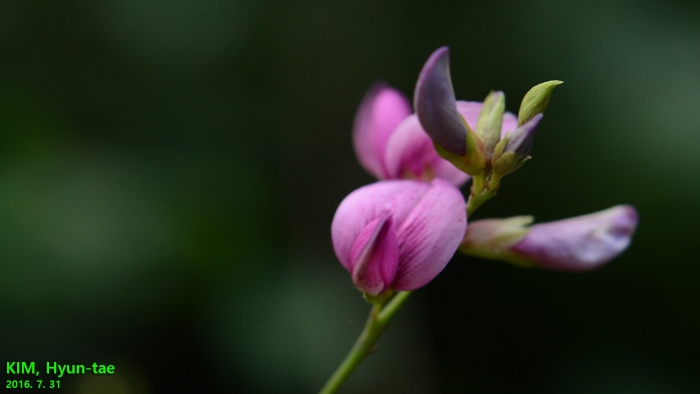Japanese Bush Clover
(Lespedeza floribunda)
Japanese Bush Clover (Lespedeza floribunda)
/
/

© Kim, Hyun-tae
CC BY 4.0
Image By:
© Kim, Hyun-tae
Recorded By:
Copyright:
CC BY 4.0
Copyright Notice:
Photo by: © Kim, Hyun-tae | License Type: CC BY 4.0 | License URL: http://creativecommons.org/licenses/by/4.0/ | Uploader: pintail | Publisher: iNaturalist |





Estimated Native Range
Summary
Lespedeza floribunda, commonly known as Japanese Bush Clover, is a deciduous shrub native to open woodlands, grasslands, and along riverbanks in Eastern Asia, including regions of China, Korea, and Japan. This plant exhibits a moderate growth rate and typically reaches a height and width of 3-5 feet (0.9-1.5 meters). Japanese Bush Clover has an arching form with slender stems and trifoliate leaves. From late summer to fall, it produces dense racemes of small, pea-like flowers that are purple or pink, adding a showy splash of color to the landscape.
Japanese Bush Clover is valued for its ornamental flowers, ability to fix nitrogen in the soil, and its use as a ground cover or in border plantings. It is also a popular choice for erosion control on slopes due to its dense growth habit. This shrub thrives in full sun to part shade and prefers medium to fast-draining soils such as clay, loam, or sandy types. It is drought-tolerant once established and requires only moderate amounts of water. While generally low-maintenance, it can spread aggressively in some conditions and may require pruning to maintain shape and size.CC BY-SA 4.0
Japanese Bush Clover is valued for its ornamental flowers, ability to fix nitrogen in the soil, and its use as a ground cover or in border plantings. It is also a popular choice for erosion control on slopes due to its dense growth habit. This shrub thrives in full sun to part shade and prefers medium to fast-draining soils such as clay, loam, or sandy types. It is drought-tolerant once established and requires only moderate amounts of water. While generally low-maintenance, it can spread aggressively in some conditions and may require pruning to maintain shape and size.CC BY-SA 4.0
Plant Description
- Plant Type: Shrub
- Height: 3-5 feet
- Width: 3-5 feet
- Growth Rate: Moderate
- Flower Color: Purple, Pink
- Flowering Season: Summer, Fall
- Leaf Retention: Deciduous
Growth Requirements
- Sun: Full Sun, Part Shade
- Water: Medium
- Drainage: Medium, Fast
Common Uses
Bird Garden, Border Plant, Butterfly Garden, Groundcover, Low Maintenance, Showy Flowers
Natural Habitat
Native to open woodlands, grasslands, and along riverbanks in Eastern Asia
Other Names
Common Names: Japanese Bush Clover
Scientific Names: , Lespedeza floribunda, Lespedeza bicolor, Lespedeza floribunda var. alopecuroides, Lespedeza stollasae, Lespedeza stottsae,
GBIF Accepted Name: